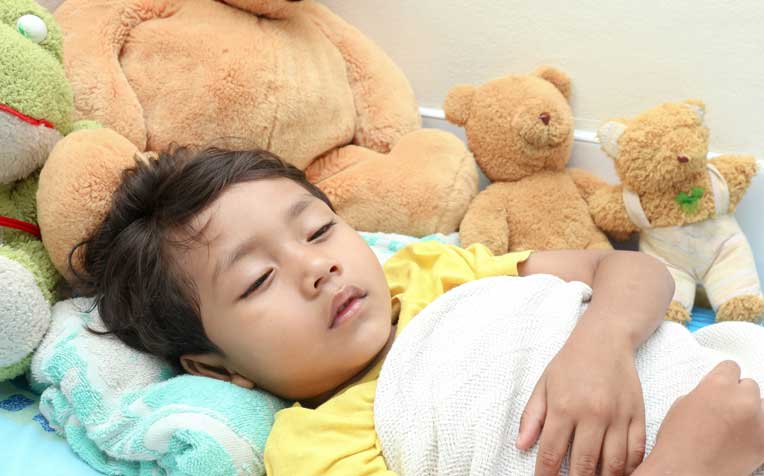HealthXchange will NEVER ask you to transfer money over a call. If in doubt, call the 24/7 ScamShield helpline at 1799, or visit the ScamShield website at www.scamshield.gov.sg.
Fever Remedies for Children

Fever in children can be brought down by keeping the room cool and well-ventilated.
Running a fever
The human body has a thermostat which helps us to regulate our body temperature. The normal body temperature is between 36.5 °C and 37.5 °C. With infection or other illnesses, various chemicals are released in our body. This re-adjusts the thermostat, resulting in fever.
Fever facts
- Fever is the body's way to fight infection. However, it is not just caused by infections alone.
- How high a fever it does not indicate the severity of the illness that is causing the fever.
- Overwrapping and a generally hot environment can cause the body temperature of a child to be slightly above normal.
- Fever caused by viral infections may persist for up to 5 to 7 days and will only completely settle when the viral fever has resolved.
- High fever per se does not cause brain damage, though a small percentage between 6 months to 6 years may have seizures with high fever. However, febrile seizures usually do not lead to brain damage.
Fever in children: Home remedies
- Tepid sponging
- May help if the temperature is more than 39.5 °C.
- Use tap or lukewarm water to sponge.
- Remove clothings, cover the child with towel, sponge and dry his face.
- Apply the cool compress to forehead, nape of neck, armpits and groin (see diagram).
- Proceed to sponge body starting with the front then to the back.
- Generally you should not sponge a child for more than 30 minutes at a stretch.
- Stop sponging when shivering occurs, or when the child turns blue.
- When your child shivers, cover him up and wait a while before resuming sponging.
- Encourage your child to take plenty of fluids.
- Dress your child in light clothings to allow heat exchange.
- Keep the room environment cool and well-ventilated to allow the ambient temperature to help bring the fever down.
Click on page 2 to read about common fever medications and know when to consult a doctor.
Ref: V10
Contributed by
Related Articles
Conditions & Treatments
Public Events
Get the Health Buddy App
© 2025 SingHealth Group. All Rights Reserved.
















 Get it on Google Play
Get it on Google Play